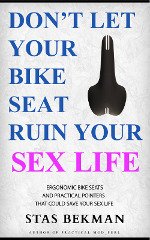Lesson Fourth. Frying, And The Clarifying Of Butter, Fat, And Dripping
Description
This section is from the book "Lessons In Cookery", by Thomas K. Chambers. Also available from Amazon: Lessons In Cookery.
Lesson Fourth. Frying, And The Clarifying Of Butter, Fat, And Dripping
The principles of Frying:
1. You must have a clear, bright fire.
N. B. - Be very careful it is not smoky.
2. Be careful that the utensil used is very clean; for if there is anything sticking at the bottom of the pan, it will quickly catch or burn, and so spoil the contents.
3. Clarify all fat (not lard), dripping, and butter before using them, to remove the impurities from the former, and the buttermilk and other watery substance from the latter.
N.B.-Fat need not be clarified more than once. After using it, always pour it off carefully in a basin, and, when it is cold, remove the sediment from the bottom of the cake of fat. Butter must be clarified each time it is used, to remove all watery substances.
4. You must have the fat very hot; good frying depends on the fat being properly heated.
5. You should test the heat of the fat by a frimome-ter, if possible. The heat should rise to 345° Fahr. for ordinary frying, and 400° for whitebait.
N. B. - If there is no frimometer, the heat of the fat may be tested by the look-as fat gets quite still and begins to smoke when it is very hot-or by throwing in a small piece of crumb of bread; and if it fries directly a light brown, the fat is ready for use.
6. Use a deep pan, with plenty of fat, so that anything put in may be entirely covered.
7. You can fry bacon in its own fat; it only requires watching and turning till it is done (see Lesson on "Liver and Bacon," from Note 1 to Note 5).
8. You may fry chops or steaks, or slices of meat, in an ounce of either clarified dripping or butter.
9. Melt the fat first, but it does not require to be heated.
10. Be watchful, when the meat is frying, not to allow it to burn; you should turn it over occasionally.
N. B. - If there is a gridiron, it is much better to broil chops and steaks, as it prevents their being greasy (see Lesson on a "Broiled Steak"). For frying Fish, see "Fish," Lessons Nos. 3, 6, 7, and 13. For frying Meat, Rissoles, Potatoes, etc., see " Cooked Meat," Lessons Nos. 2 and 6; "Australian Meat," Lesson No. 8; " Entrees," Lessons Nos. 4 and 11; and " Vegetables," Lessons Nos. 3 and 4.
To render down or clarify fat:
1. Take any scraps of cooked or uncooked fat, and cut them up in small pieces.
2. Put the pieces in an old but clean saucepan, and pour in just enough cold water to cover them.
3. Put the saucepan on the fire, and keep it boiling; it will take about an hour. The lid should be off the saucepan.
4. Stir the fat occasionally, to prevent it from burning, or sticking to the bottom of the saucepan.
5. When the water has evaporated, and the pieces of fat are cooked, pour the melted fat through an old sieve into a basin, and, when cold, it can be used for all frying purposes, instead of lard.
To clarify dripping :
1. Put the dripping in the saucepan, and put it on the fire to boil.
2. When it boils, pour it into a basin, in which there should be half a pint of cold water.
3. When the dripping is cold, take a knife and cut round the edge, so as to take out the cake oj dripping.
4 Scrape off all the sediment that will be found on the bottom of the cake, and wipe it dry with a cloth.
To clarify butter:
1. Put the quantity of butter required for present use in a small saucepan, and put it on the fire and let it boil.
2. When the butter has boiled, take a spoon and remove the white scum from the top.
3. Then pour the clear butter carefully into the pan for use, as below the butter will be a little more watery substance.
Continue to:


